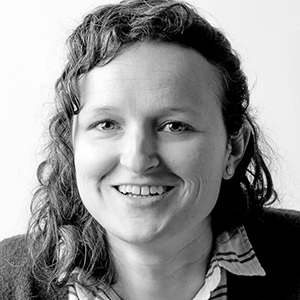Talking to Your Kids About Race

My conversation with Allison Weatter of Don R. Roberts Elementary, Pamela Lewis of Pinnacle View Middle School and Adrienne Hawkins of Chicot Primary School and Early Childhood Center is one of the highlights of my stint as Little Rock Family editor.
In light of the killings of George Floyd, Breonna Taylor and Ahmaud Arbery in just the last few months, the urgency to speak to the next generation — our kids — about race, discrimination and systemic racism weighed on my heart.
So I reached out to these three school counselors — diverse women who have dedicated their professional lives to children and teaching them social and emotional intelligence. I am thankful for the time and wisdom they shared with me, and in turn, that I can share with you.
Lewis kicked us off by addressing the elephant on the Zoom call: “Racism is a tough conversation to have. We are treading water that is difficult to tread. We are feeling this discomfort, but it’s time to be mature about this conversation.” Yes, this conversation is hard, but we all agreed it’s too important to let discomfort get in the way.
Weatter continued, “It’s time to start fumbling through these conversations and modeling them for our kids. We don’t ignore any other concept we want our kids to learn.”
And with that, we were off. I asked a few questions and let them share their thoughts on what was clearly an important topic to each of them.
When should parents start talking to kids about race?
Lewis: You can’t start too early. Everything kids see communicates. Be intentional about exposing your kids to other races early on. You’re saying “these people are just as welcome as all.”
Hawkins: I recommend starting even before your kids can talk. Try reading books that feature multicultural characters. It is a lot easier to start earlier and important to start before school starts so that schools can jump off of where your kids are.
Weatter: Yes! According to the American Academy of Pediatrics, children can start noticing racial differences as soon as they are 6 months old. It’s not OK to just not be racist. That’s why we need to give them language. The first step is checking yourself and your biases.
What is helpful language when talking to your kids about race?
Weatter: For elementary kids, teach them language that celebrates diversity. If a student sees a new dish in a friend’s lunchbox, I encourage them to say “Oh, I’ve never seen that before!” instead of “Oh, that looks gross!”
Hawkins: Start by valuing words like kind, nice and fair. For elementary school kids, you can still present terminology above their grade level, just make sure to explain it. Use inclusive language when possible.
Lewis: For older kids, shoot it straight — say it the way it is. That works the best. Not having a conversation will lead kids to have their own conclusions. These kids can affect change!
What are helpful activities when teaching your kids about race?
Lewis: With your older kids, watch current events and learn about history together. Ask “How do you feel about that?” “What have you heard?” Ongoing conversations make kids feel heard and valued. It is very important to choose these experiences.
Weatter: It can be as simple as going to a different Kroger. Driving just five more minutes is an easy way to expose your kids to more diversity in their daily lives. You can also intentionally enroll them in different sports.
Hawkins: You can use art and food to expose your family to different cultures. If you try a new cuisine, take time to talk to the servers and celebrate cultures.
Books, Movies and Resources
Through our conversation, each counselor offered books, movies and sites that will act as a springboard as you start having these conversations with your kids.
Use each of these books, movies and videos as a chance talk to your kids about how they feel about diversity and discrimination.
Books
- “Words and Your Heart” by Kate Jane Neal (ages 2-6)
- “The Crayon Box that Talked” by Shane Derolf (ages 3-7)
- “Say Something” by Peter H. Reynolds (ages 4-8)
- “The Skin You Live In” by Michael Tyler (ages 4-8)
- “The Ugly Duckling” by Hans Christian Andersen (ages 4-8)
- “The Day You Begin” by Jacqueline Woodson (ages 5-8)
- “Each Kindness” by Jacqueline Woodson (ages 5-8)
- “A Kid’s Book About Racism” by Jelani Memory (ages 5 and up)
- “The Myth of Race” by Robert Wald Sussman (ages 15 and up)
Movies and Videos
- “Be an Upstander - Prevent Bullying: A NED Short” on YouTube (ages 5 and up)
- “Zootopia” (ages 8 and up)
- “Black History Movies That Tackle Racism” on CommonSenseMedia.org (for middle school students and up)
Websites
Take a deep dive into these sites for podcasts, magazines and even lesson plans.

